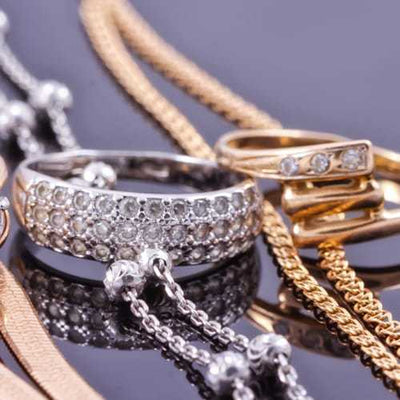What Is Alexandrite?
Alexandrite is a gemstone that was originally found in Russia in 1834. The gemstone is a variety of Chrysoberyl, and it was initially mistaken for emerald, which makes sense because it was originally found in Russian emerald mines.
We mentioned that alexandrite is chameleon-like. This is because it changes color based on the type of light it is viewed in. For example, in sunlight, you will see alexandrite as a greenish-blue color. In artificial light, the stone appears more of a reddish-purple.
In addition to having a unique color-changing property, alexandrite is also a great example of another phenomenon: chatoyancy. Chatoyancy is also referred to as "cat-eye." Stones that exhibit chatoyancy have a visible white stripe in the gem's center that makes the stone look like a cat's eye. You can see this phenomenon best when you move the gem back and forth in fluorescent light. Other gemstones with chatoyancy include aquamarine, tourmaline, and moonstone.
This unique stone was named in honor of Russian Czar Alexander II because a Finish mineralogist named Nils Gustaf Nordenskiöld discovered the gem on the future czar's 16th birthday. At the time, the czar was known as Alexander Nikolaevich.
Alexandrite earns a rating of 8.5 on the Mohs Scale of hardness. It is harder than garnet (7.5) and softer than sapphire (9). Its hardness makes alexandrite easy for jewelers to work with and owners to keep in good shape.
Where Is Alexandrite Found?
Alexandrite was discovered in the Urals of Russia. However, these mines produce very little these days. Now, most alexandrite is found in Sri Lanka. Other deposits have been found in Brazil, Burma, Madagascar, and Tanzania.Types of Alexandrite
The types of alexandrite are dependent on where they were mined.
- Zimbabwe Alexandrite: These stones have very little color change and tend to be darker in color with hints of purple.
- Tanzanian Alexandrite: These specimens generally are lighter in color and have moderate to good color-changing abilities.
- Brazilian Alexandrite: These gems tend to be highly saturated with a blue to purplish color change.
- Sri Lankan Alexandrite: Also called Ceylon alexandrite, these gems are known to show a khaki to brown color change.
4 C's of Alexandrite
Determining the value of alexandrite can be a challenge. Experts use the four C's to determine what a gem is worth in the current market.
Color
Alexandrite gets its green hue from chromium impurities, which can also be found in emerald. This isn't surprising since it is often found in areas where emerald is also present. Typically, fine alexandrite is green to bluish-green in daylight and red to purplish-red in incandescent light.
The best alexandrite specimens will be moderately strong or better in color saturation. Stones that are too dark will look almost entirely black, but stones that are too light won't have a high enough color quality.
Cut
Typically, alexandrite is cut into the traditional faceted shapes lie round, pear, oval, and cushion. Fancy shapes are also reasonably common. Unless an individual alexandrite stone possesses chatoyant properties, it is unlikely that the stones will be cut into a cabochon.Carat
Alexandrite is rarely found in large sizes, so any gem weighing more than three carats is scarce. Any alexandrite over one carat is likely to be highly valuable. Most alexandrite gemstones are quite small.Clarity
Alexandrite is generally eye-clean. In fact, inclusions are rare. The most common inclusion is one that gives alexandrite the cat-eye effect we mentioned earlier. This "defect" can actually increase the value of the gem.Caring for Alexandrite
To care for alexandrite properly, you should clean it only with warm soapy water. You can dry the stone with a soft, lint-free cloth. If the gemstone is free of fractures, you can clean it using a steam or ultrasonic cleaner. We recommend that you never use harsh chemicals to clean your alexandrite.
Storing alexandrite away from other jewelry, especially diamonds, can prevent scratching or chipping the beautiful stone.
Noe's Jewelry is proud to offer these unique gems to their Raymore, Missouri customers. If you are interested in purchasing alexandrite, contact us today at 816-322-7227, or stop into our store.
Check out the other stones in our Gemstone Series Guides:







